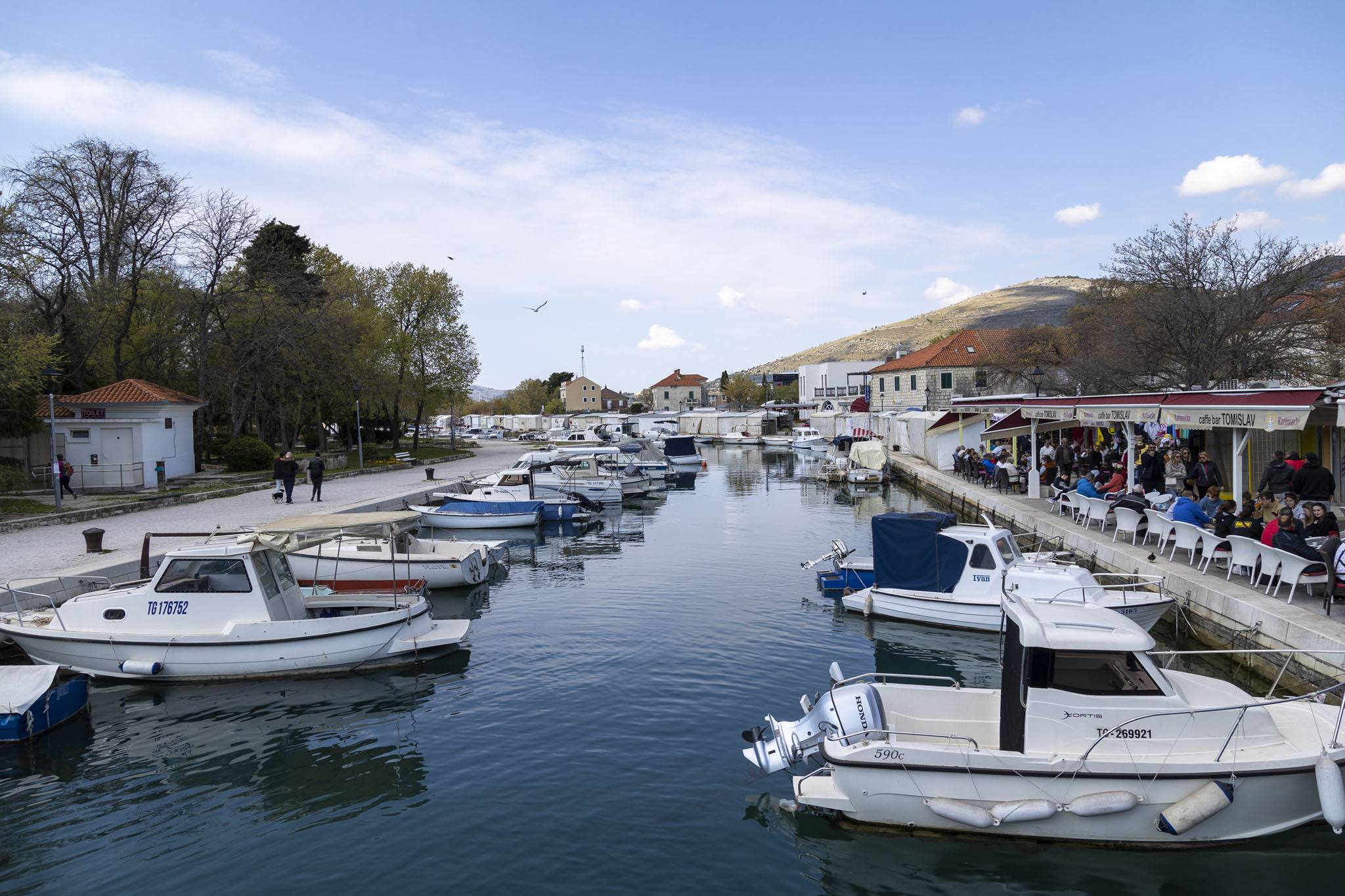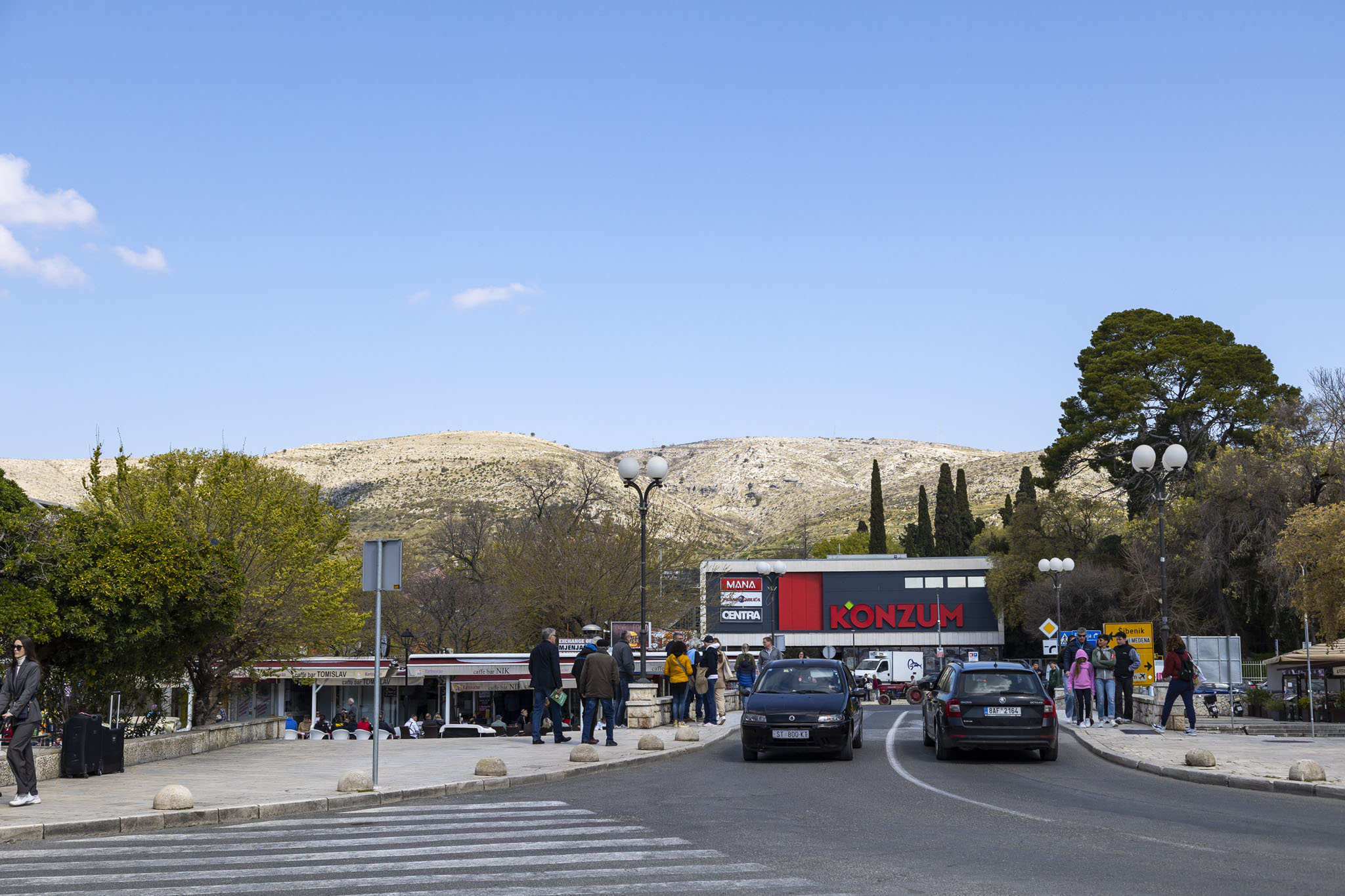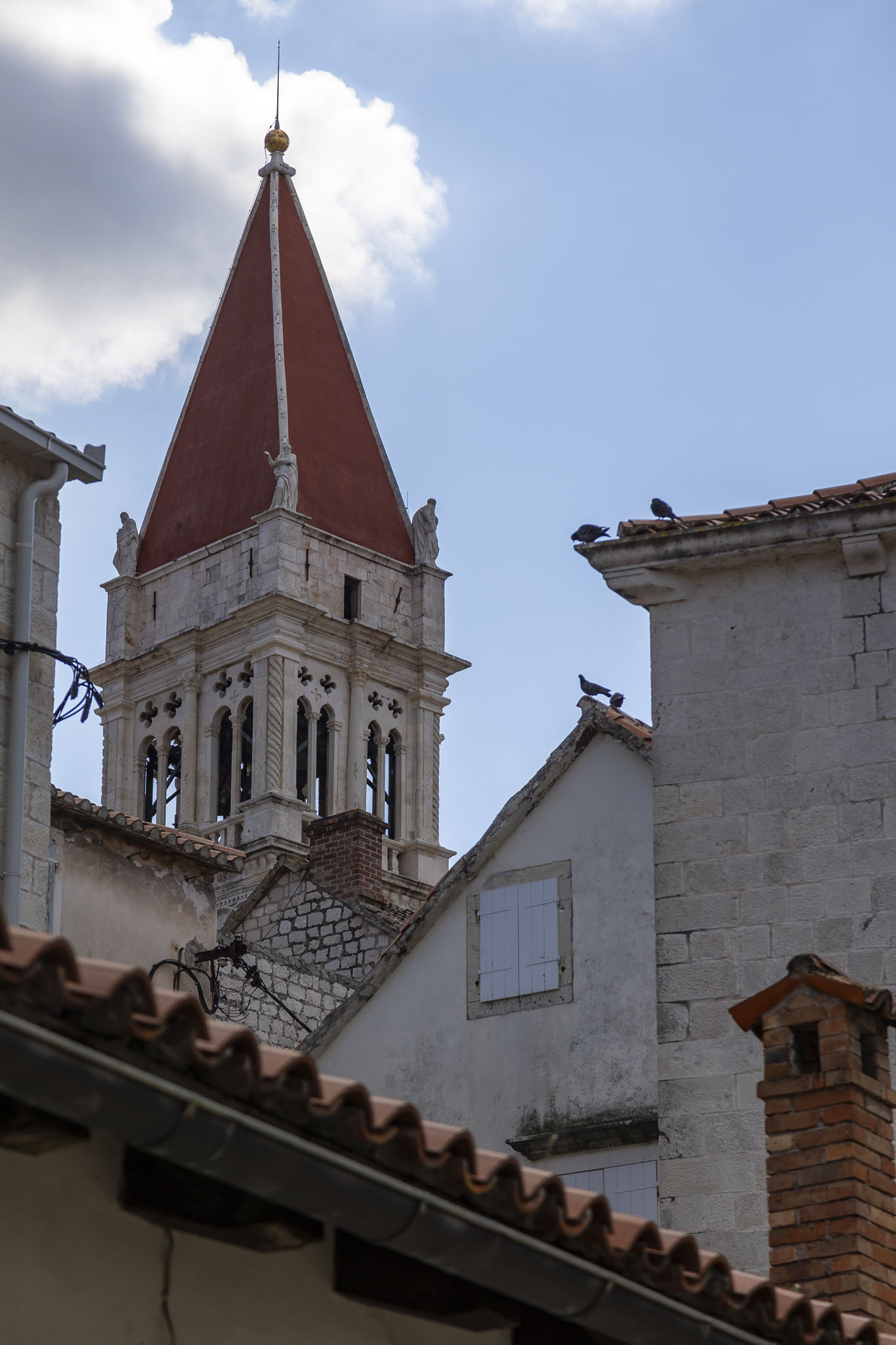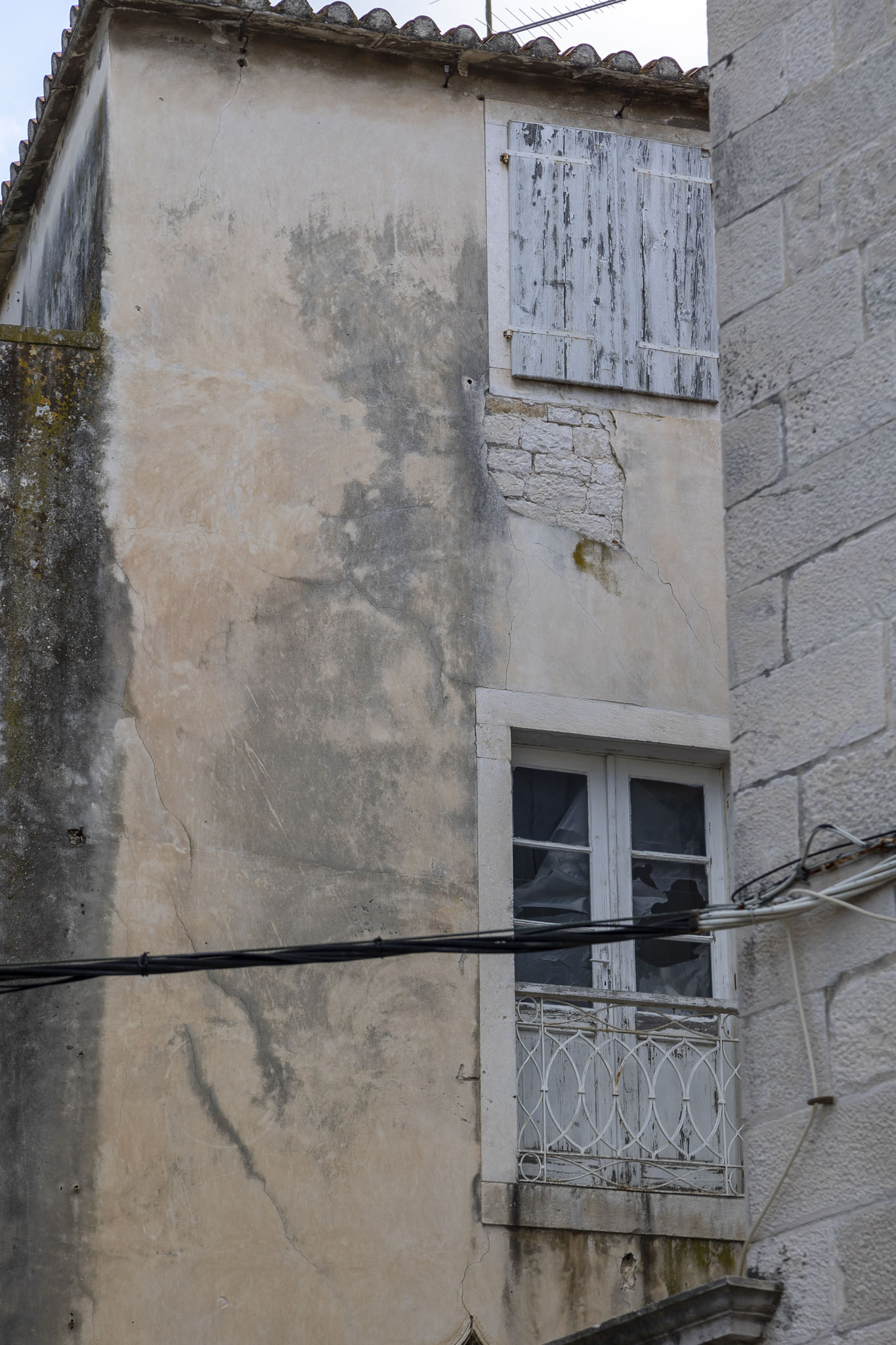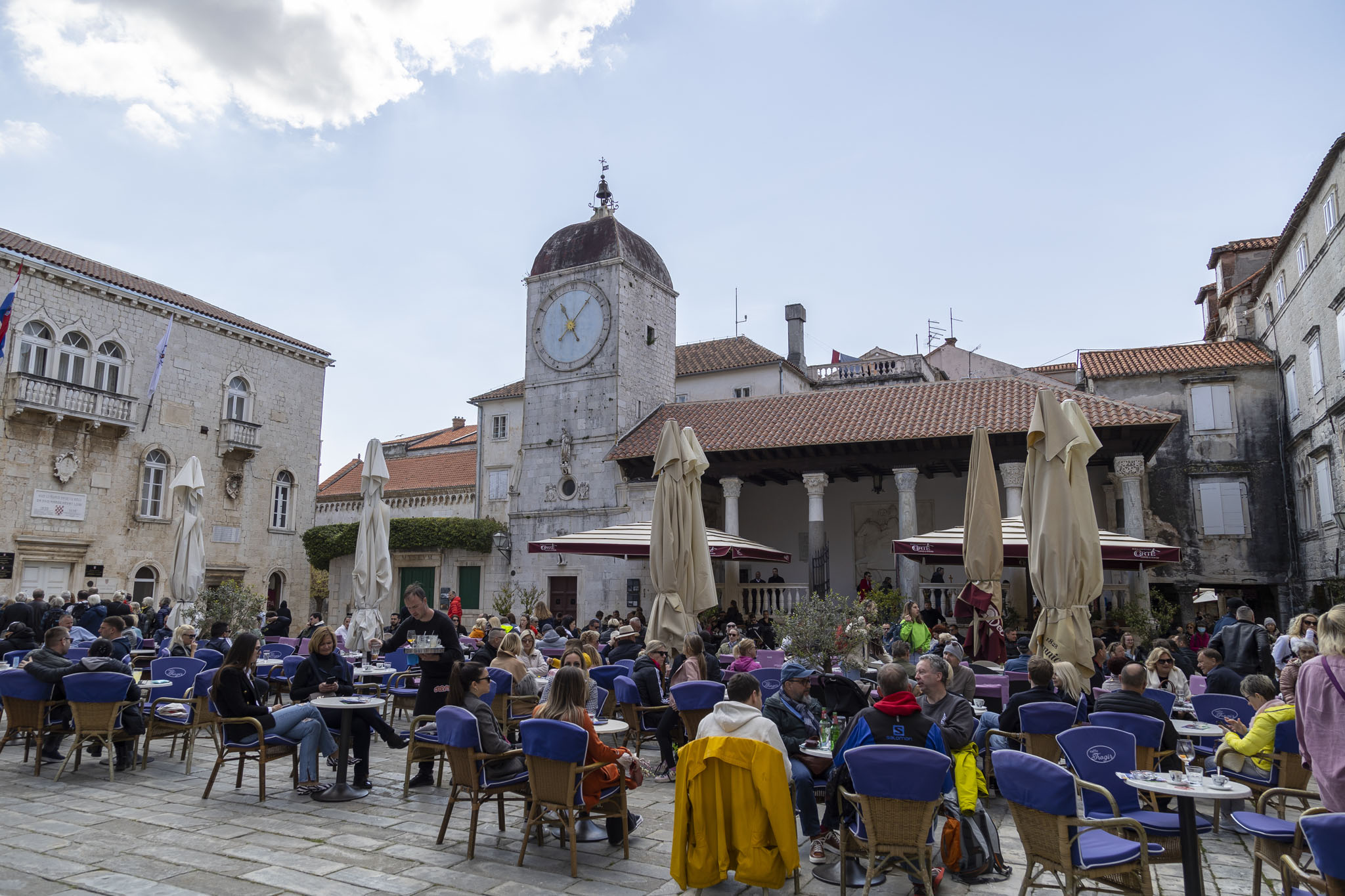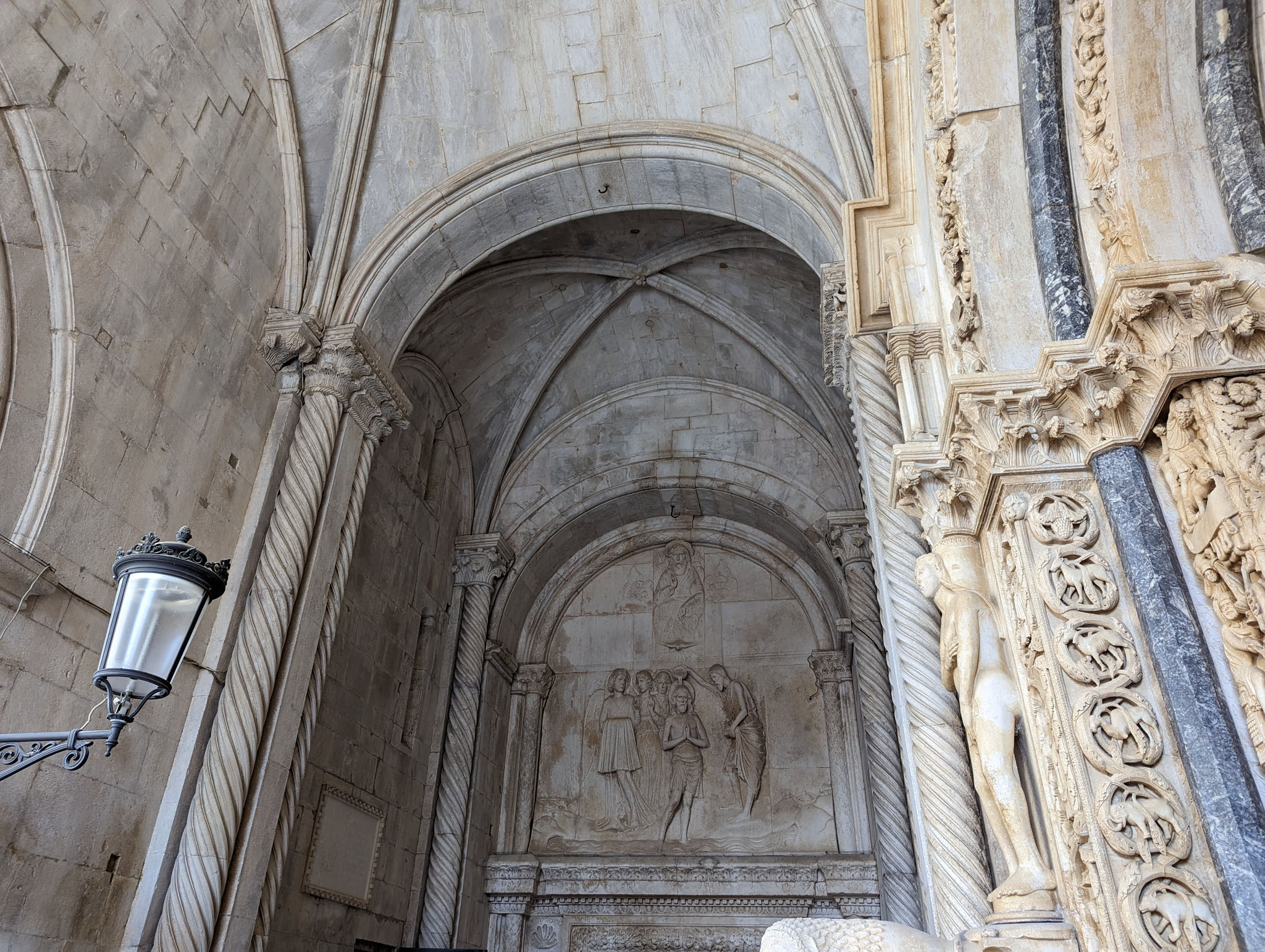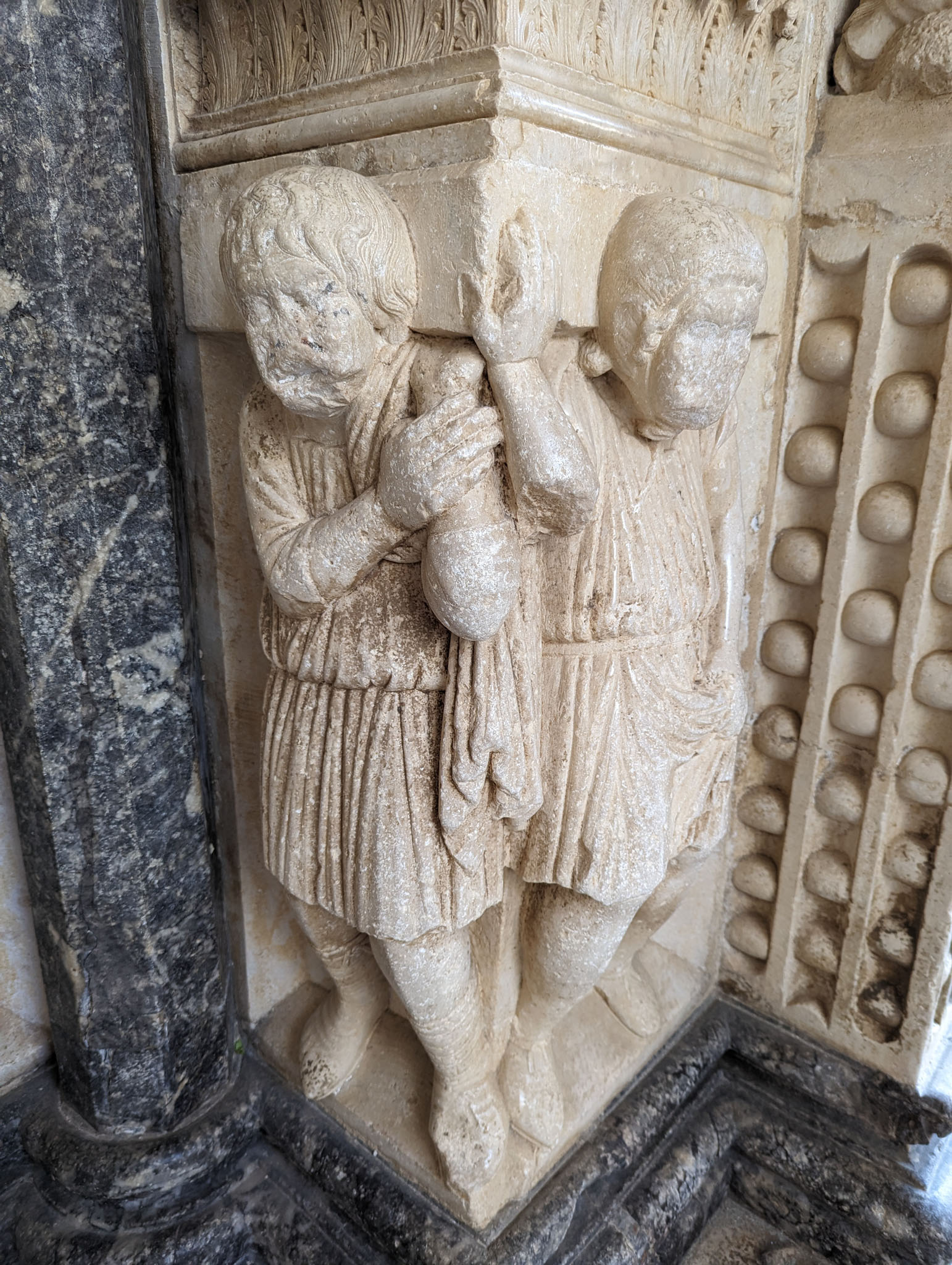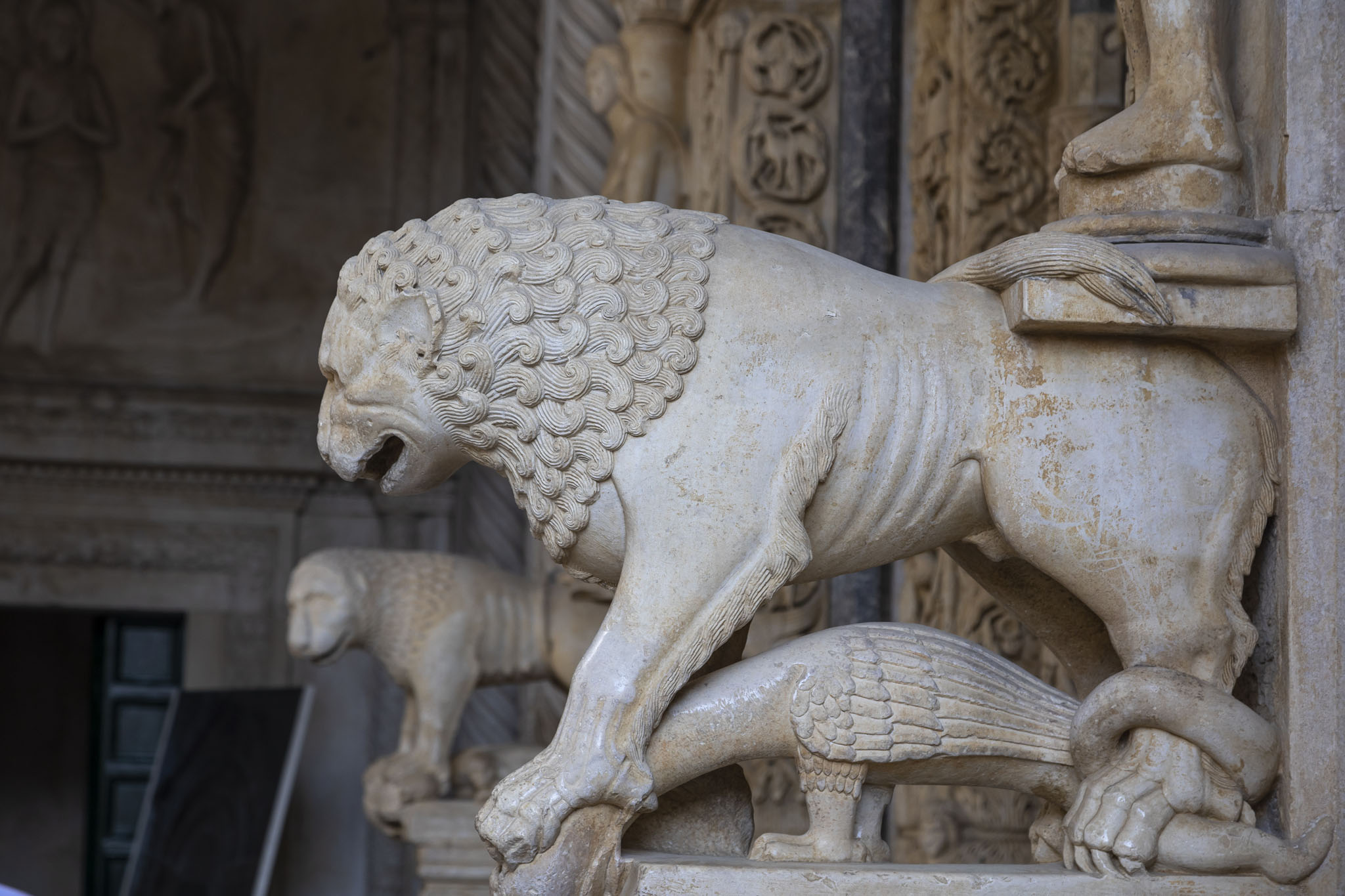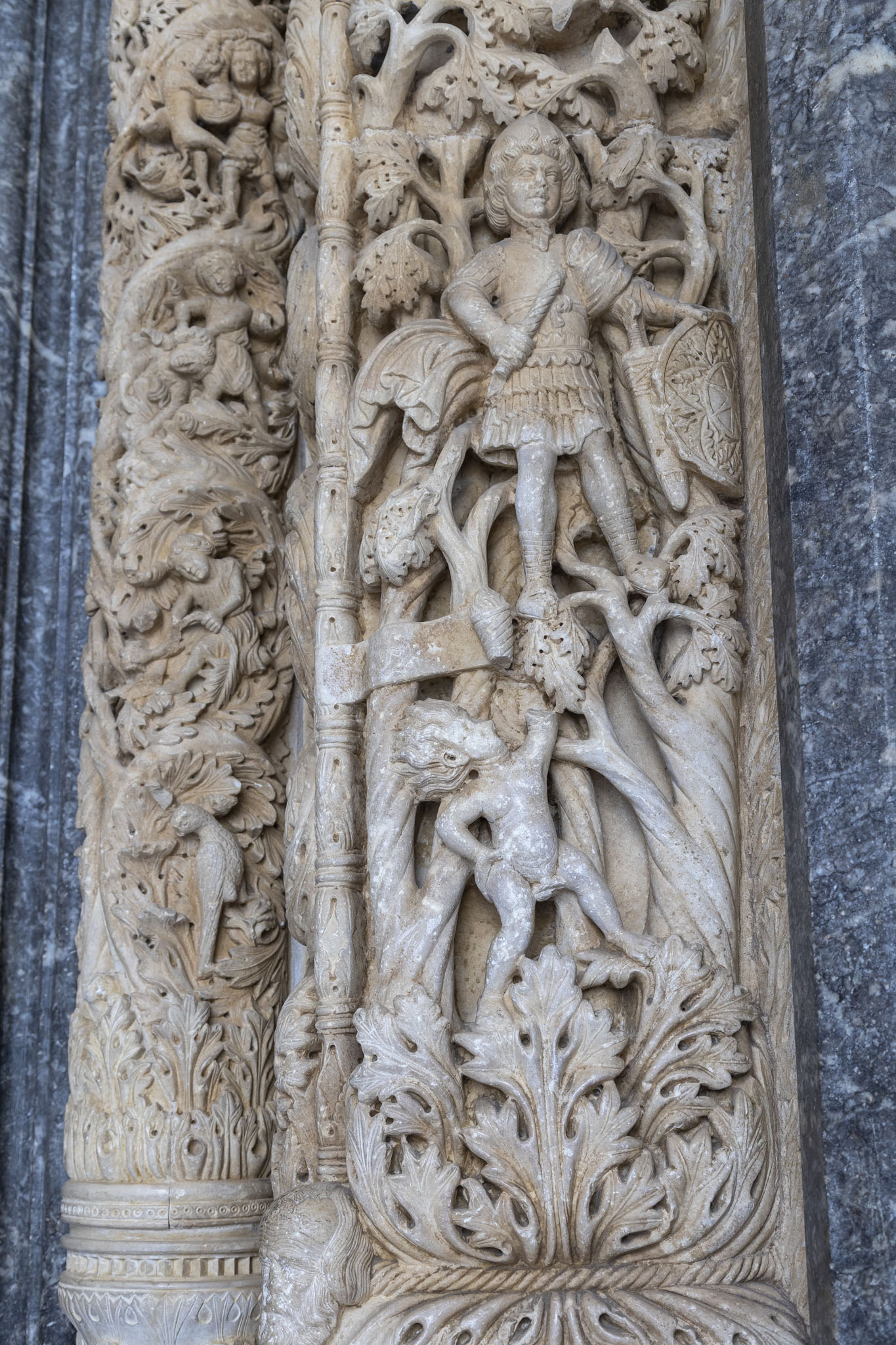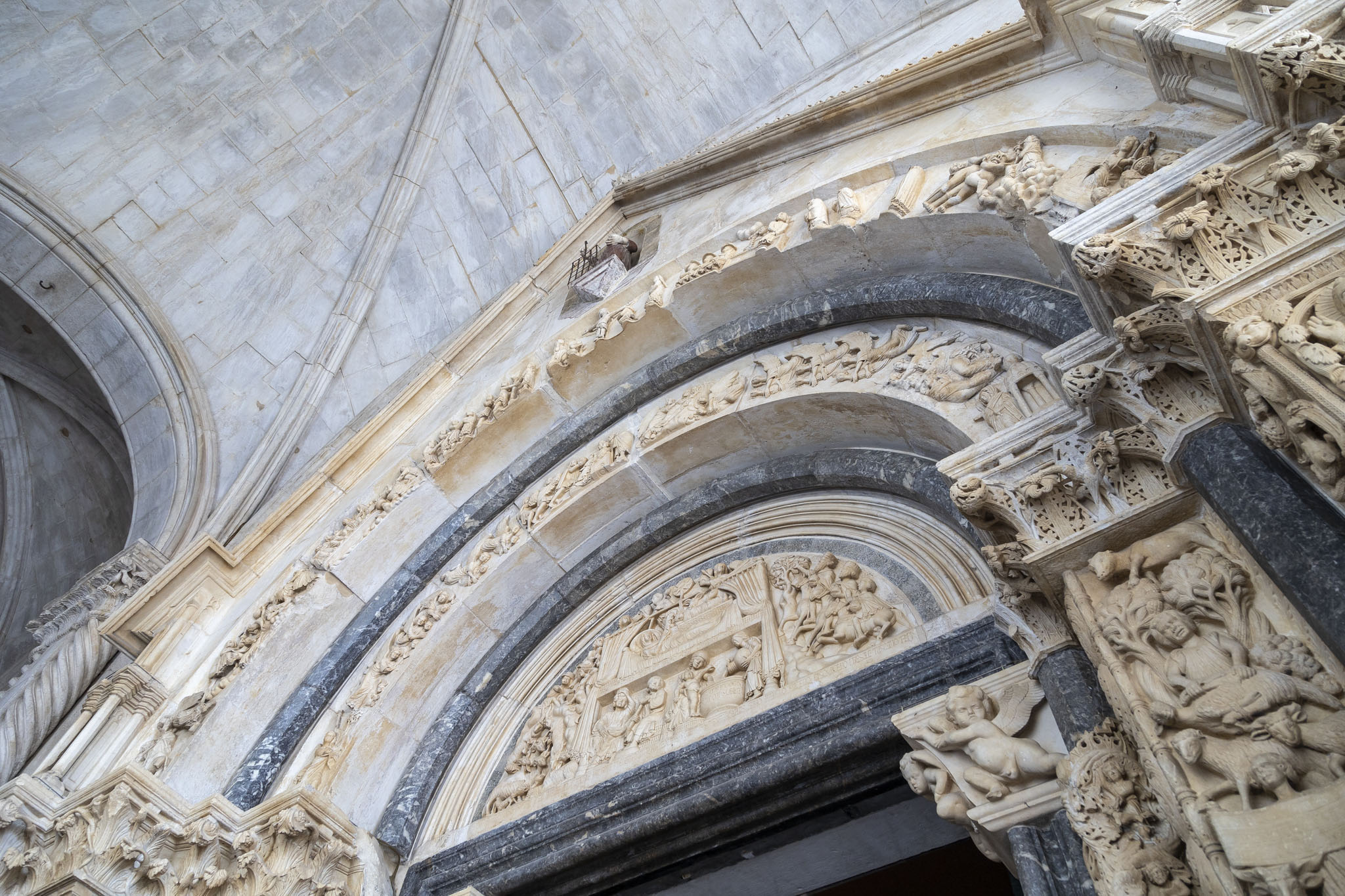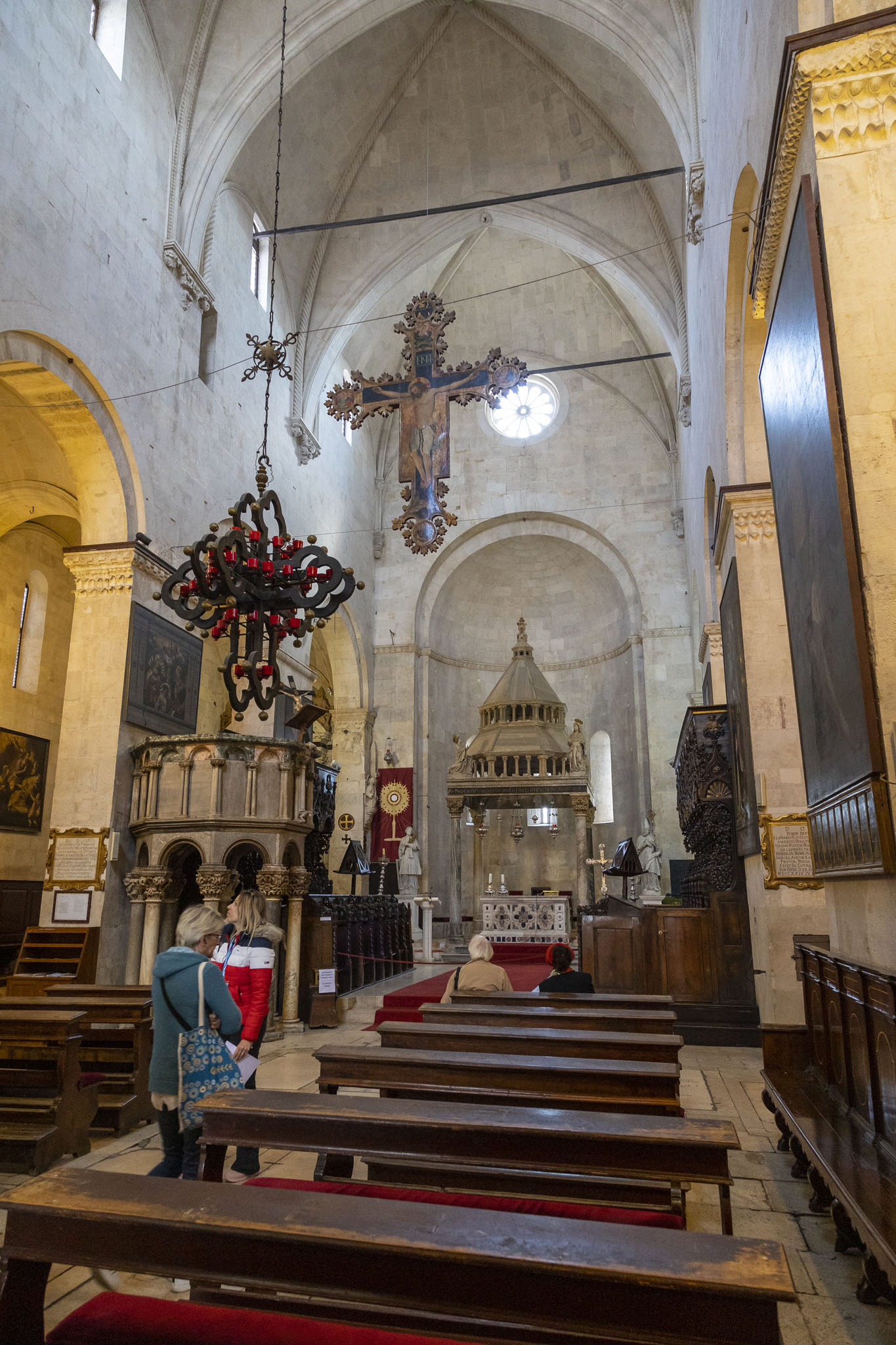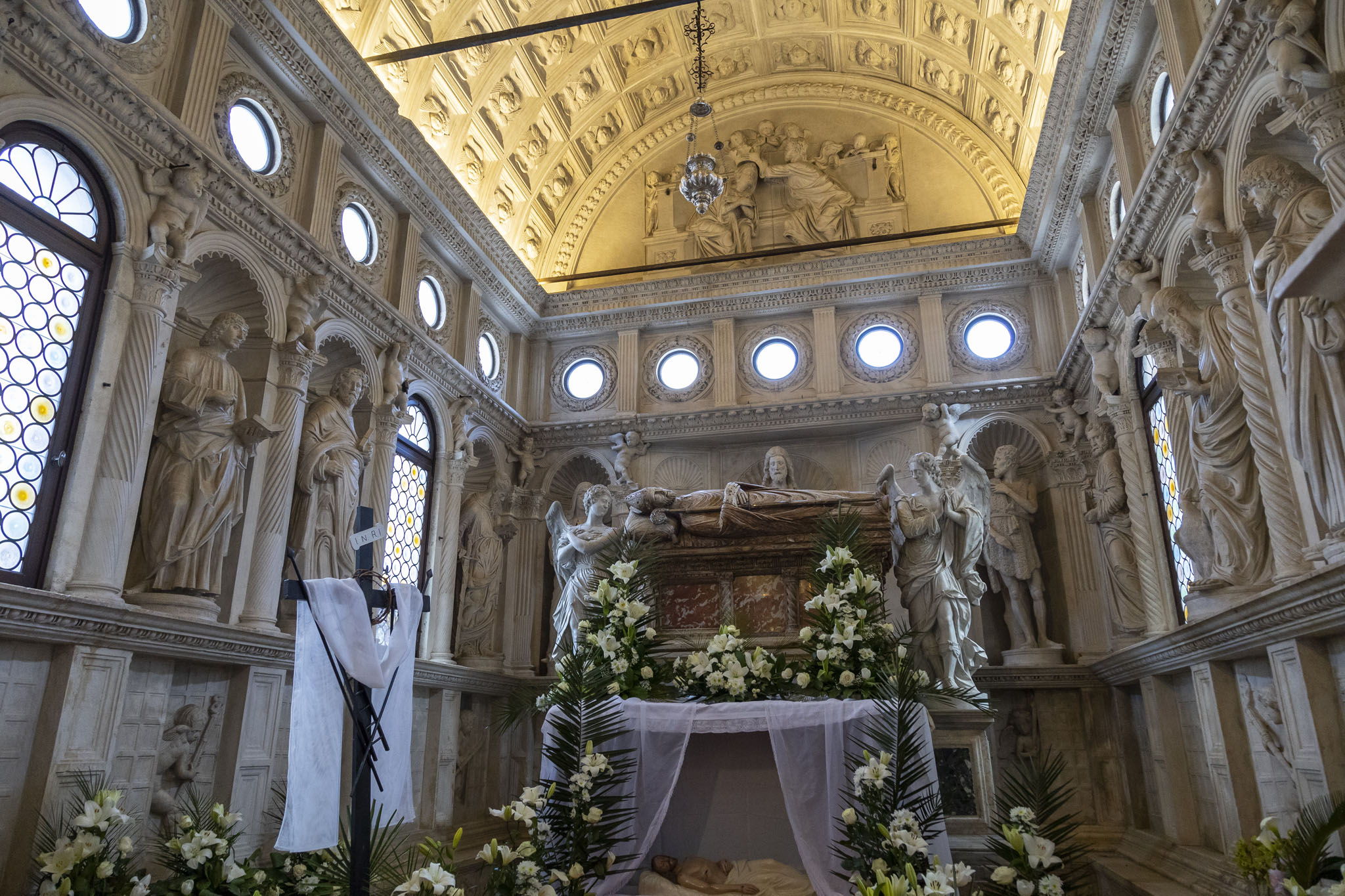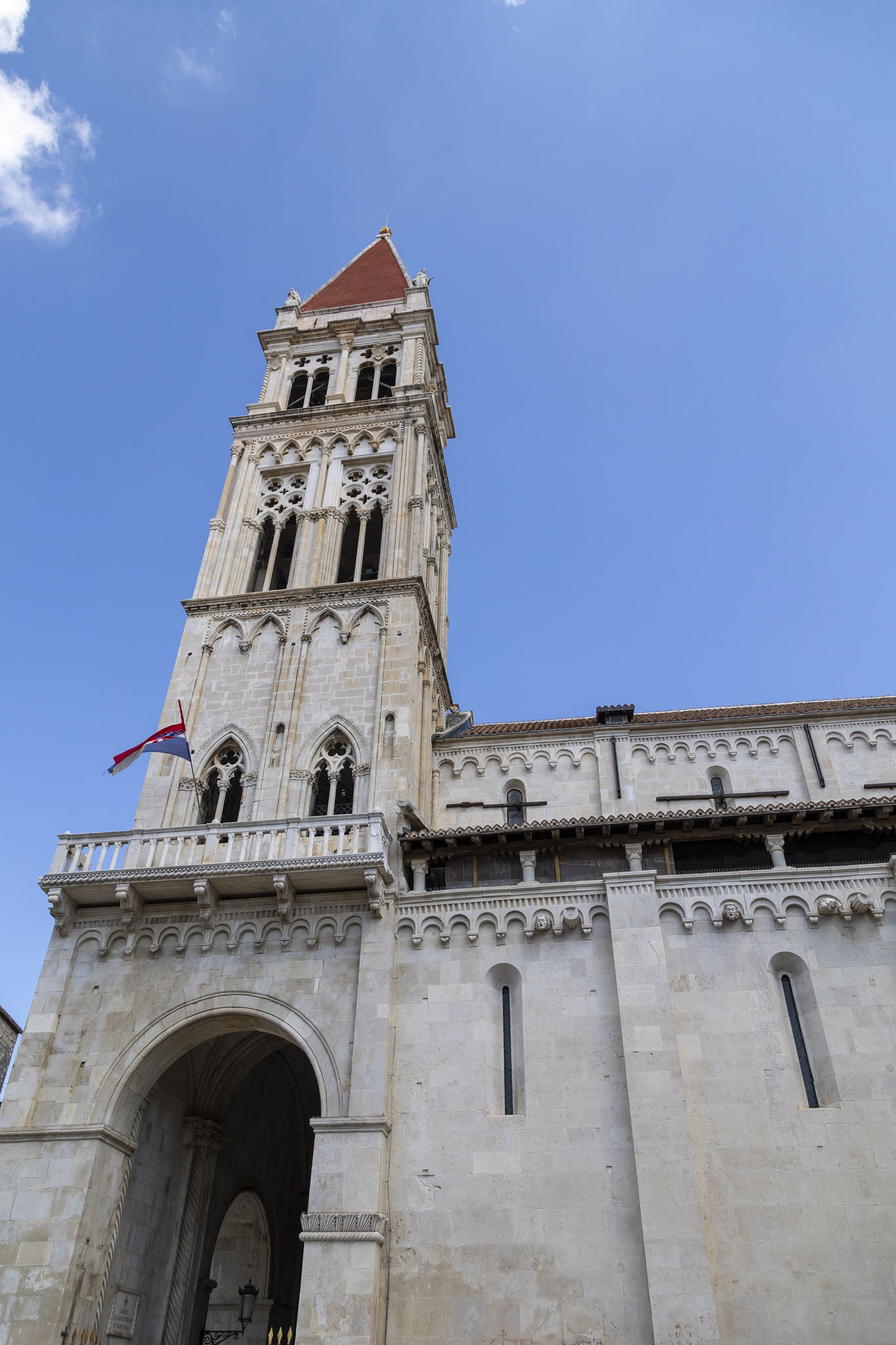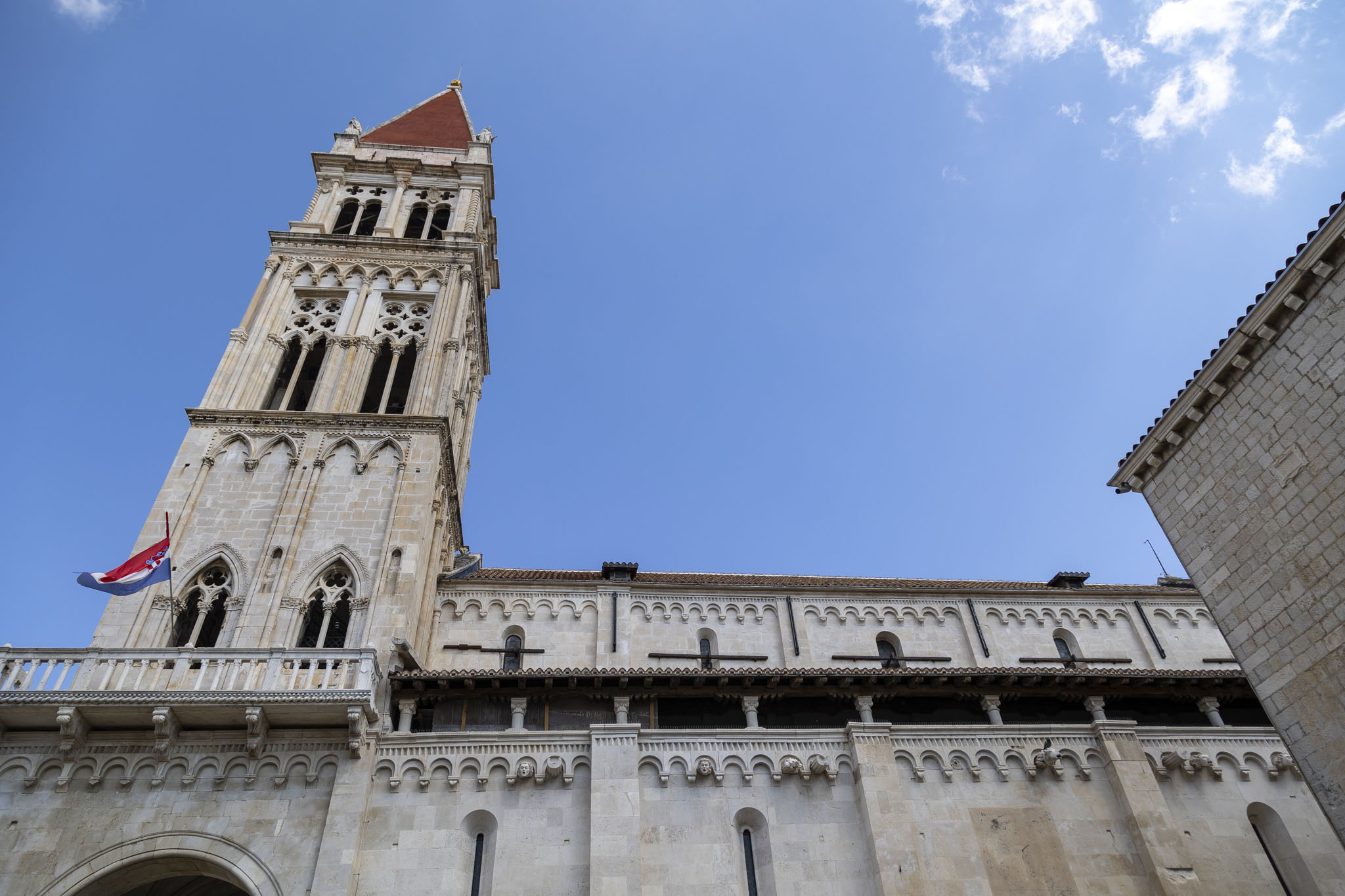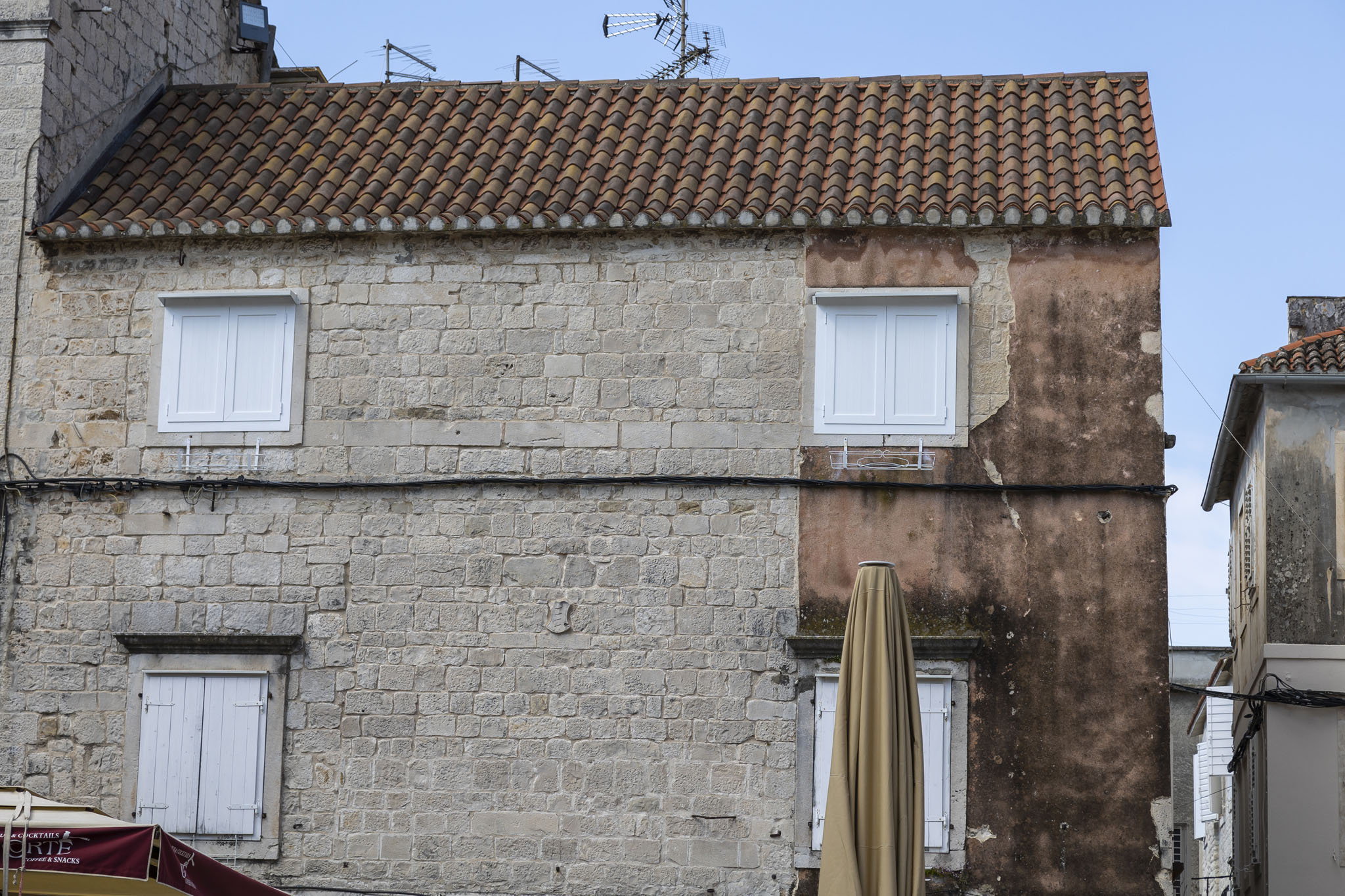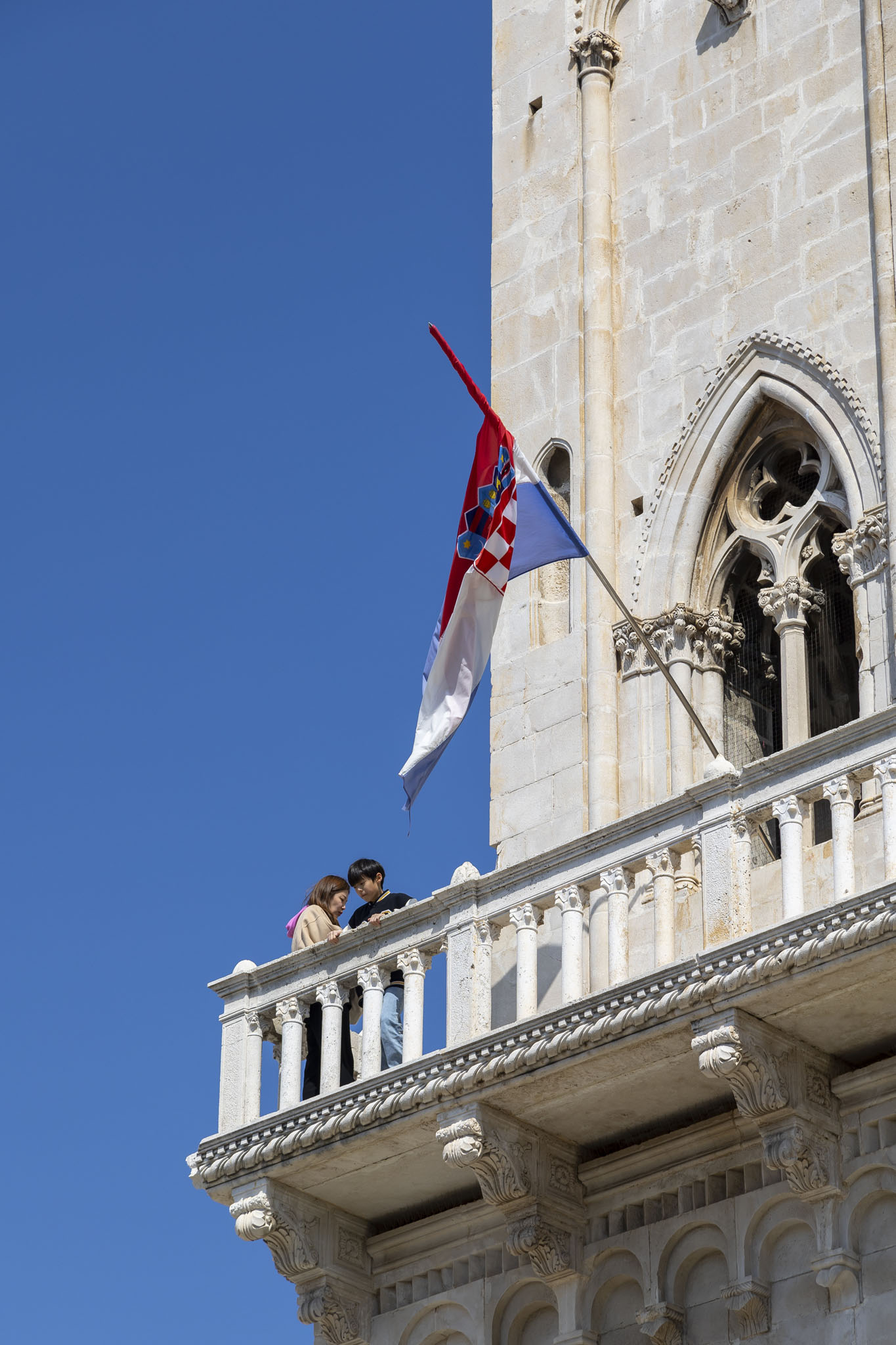We finally got to tick Croatia off the travel list in 2023 when we visited several ports in the country as part of our week-long Adriatic cruise aboard P&O Azura, and the first of those ports was the city of Split where we’d booked an excursion with P&O Cruises. The first part of that excursion was a visit to the nearby town of Trogir.
We awoke to glorious sunshine and mostly clear blue skies. There wasn’t much wind but it did have a slight nip in the air. Breakfast offerings on Azura for the second day in a row were poor, and while we don’t like to eat too much when we’ve got an excursion booked anyway – just to cut down on sudden loo trip needs – it was still a disappointment not to have the choice, as you can imagine.
Our tour trip to Trogir started at 10:00 and it didn’t take too long to drive the roughly twenty five kilometres to the parking area just over the water from the small island on which Trogir was situated. Did that mean that there was no need for anyone to use the public toilets by the car park since it had been a short drive from the ship on which there were no end of toilets to use? It did not mean that at all. Were there enough toilets for all the people in cars and buses that had arrived to visit the ancient town on this fine day? There were not. Was there a large queue and a lot of muttering about the fact that the toilets weren’t free and needed Euros to use them? You bet there was. Did we all subsequently lose close to twenty minutes of our excursion time waiting for everyone to do what they had to do? Naturally. Am I finished asking these questions? I think I might be.
As I’ve mentioned, Trogir is located on a small island, itself sandwiched between the mainland of Croatia and another island, Čiovo, both accessible by bridges.
Trogir is a UNESCO World Heritage Site, gaining this accomplishment thanks to a town layout that has mostly remained unchanged since the Hellenistic Period – the three centuries between the death of Alexander the Great in 323 BCE and the emergence of the Roman Empire in roughly 30 BCE – despite being ruled over by numerous dynasties and families and countries in the intervening time. Since Trogir’s formation it has at some point gone through Greek colonisation, serving as one of the Roman city-state enclaves surviving the fall of Rome, having Croatian rulers, being part of the Byzantine Empire, having semi-autonomous rule under Hungary then Venice, suffering near-total destruction by the Saracens, having Venetian rule for several centuries, becoming part of the Habsburg Empire, becoming part of Napoleon’s territories, becoming part of Yugoslavia, being annexed by Italy, forming the independent country of Croatia under German oversight following partisan uprising, joining the second Yugoslavia (did you know there had been more than one?) after a second uprising, then back to just Croatia in the 1990s.
Much of the architecture in Trogir these days comes from after the Saracen attacks in 1123. Towers, churches, and a fortress are all contained on the small island with its beautiful medieval alleys between tall, white stone buildings. Architectural styles range from Romanesque to Baroque and Renaissance and Gothic, but it all seems to fit together coherently, and we would be visiting a place demonstrating that beautifully with a look around the Cathedral of St Lawrence, the construction of which took long enough to incorporate all the styles of the various periods.
The cathedral stood on the north side of the town square filled with people dining and drinking in the morning sunshine. To the south we could see a clock tower on the Chapel of St Sebastian next to a raised loggia that we would be visiting soon after.
The Cathedral of St Lawrence is by far the largest building in Trogir and was built by Radovan, a master sculptor and architect who lived in the city in the thirteenth century. The door frame consists of intricate reveals around the jambs depicting various scenes: Adam and Eve supported by lions; events from the life of Jesus; hunting and monthly labour scenes of the medieval period. The skill displayed is exceptional.
The interior of the church shows some Gothic touches, particularly in the ceiling, but many of them were later additions to the mostly Romanesque style that covered the bulk of the main building’s construction.
We spent about fifteen minutes in the cathedral and then were given a little bit of free time to have a look around the town square before we were expected to meet at the loggia opposite the cathedral. There was no disputing that Trogir was a lovely town providing attractive backdrops to the tourists who’d flocked to it to find seats and soak in the atmosphere.
We got a better look at the cathedral’s bell tower from outside and a better indication from the window shapes of the different architectural styles added in layers over the years. It’s possible to climb up the bell tower – and we saw people on a balcony high up who’d clearly done just that – but I’m glad we weren’t offered the opportunity as we might have felt compelled to attempt it and that’s the sort of thing that my wife rarely forgives me for.
Our guide then gathered us together at the loggia opposite the cathedral where we were treated to some traditional Dalmatian singing by a group of men.
To conclude our time in this historic Croatian town we then had a little more free time to explore on our own so the next post in this cruise travelogue series will show off some more photos of Trogir as we wandered aimlessly for a short while.





